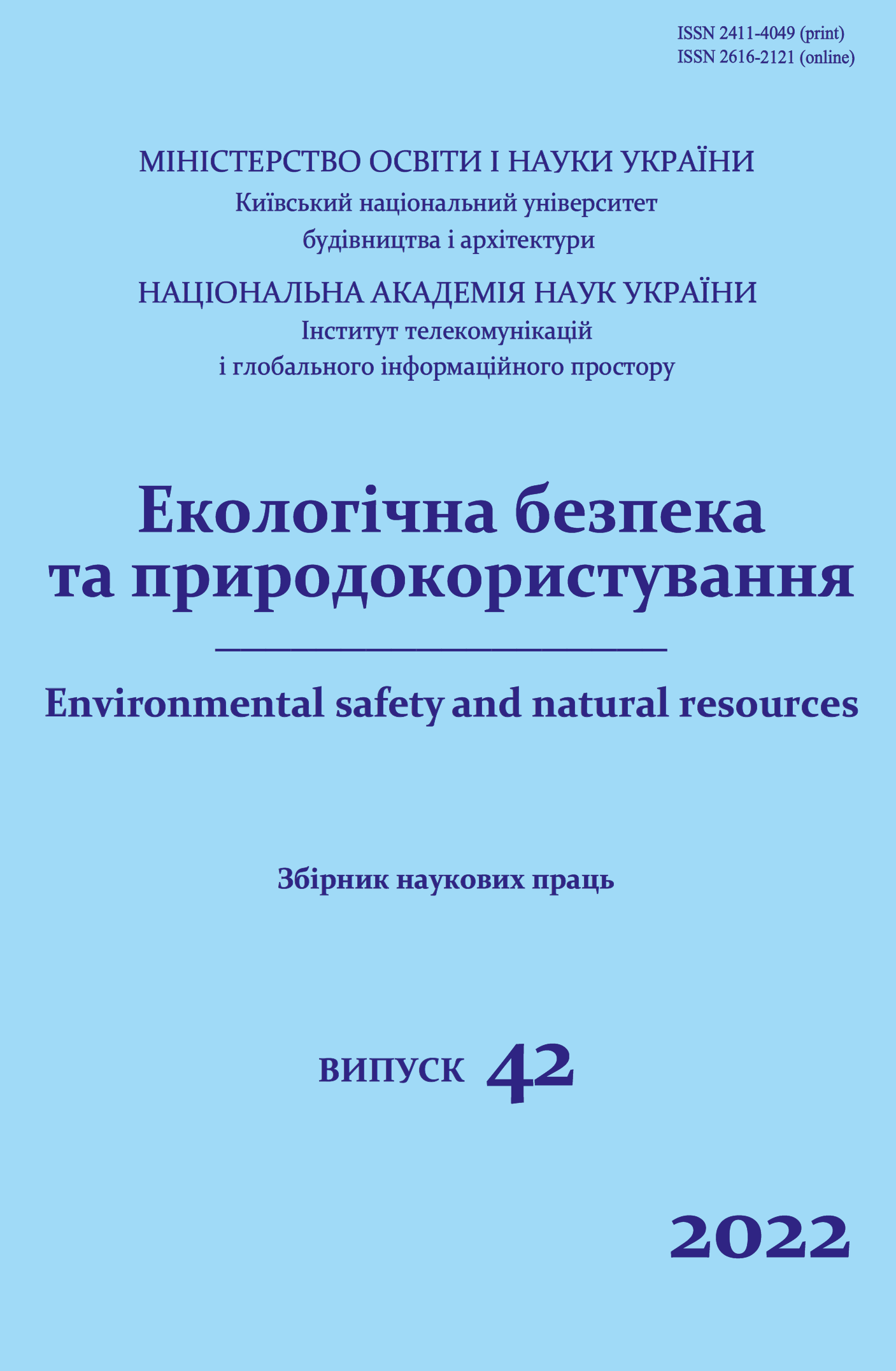Peculiarities of implementation of the network of ecological monitoring of combat action for the Armed Forces of Ukraine
DOI:
https://doi.org/10.32347/2411-4049.2022.2.23-34Keywords:
ecological monitoring, ecological military information, environment, armed forces, information and measuring systemAbstract
The current ecological state of Ukraine's natural environment is largely determined by the consequences of hostilities taking place almost throughout its territory. The article considers the peculiarities of the implementation of the concept of a single network of environmental monitoring of hostilities for prompt response and preventive measures to prevent irreversible damage to the components of the environment, personnel and the population living in the vicinity of hostilities.
The analysis of the structural and logical model of the system of ecological monitoring of military-man-made objects and its adaptation to the monitoring of hostilities is carried out. A structural and functional scheme of the environmental monitoring system of hostilities has been developed, which allows to obtain detailed information from all four levels of subordination for the Armed Forces of Ukraine.
The types and nature of environmental information processed in the system of environmental monitoring of hostilities are determined. The architecture of the information-measuring system of ecological monitoring of combat operations and the peculiarities of the interaction of its components through the information-communication system of the Armed Forces of Ukraine have been developed.
Requirements to the information-measuring system of ecological monitoring of military operations are formed and the architecture of ecological-information systems on the basis of the effective concept of a data warehouse which generalizes all ecological information on influence of military actions on an ecological condition of environment of Ukraine is offered.
The structural and functional scheme of the information-analytical system of ecological monitoring of military operations is offered, which will allow to successfully implement the tasks listed in the article and to achieve high efficiency of ecological information use.
References
Dovgy, S.O., Ivanchenko, V.V., Korzhnev, M.M., Kurilo, M.M., Trofimchuk, O.M., Chumachenko, S.M., Yakovlev, E.O., & Belitskaya, M.V. (2016). Assimilation potential of the geological environment of Ukraine and its assessment. Kyiv: Nika-Center [in Ukrainian].
Chumachenko, S.M., Morshch, E.V., Mikhailova, A.V., & Partalyan, A.S. (2020). Methods of comprehensive operational expert assessment of military-man-made threats in the area of the Joint Force Operation. Scientific Bulletin: Civil Protection and Fire Safety, 1(9), 23-33. doi: https://doi.org/10.33269/nvcz.2020.1.23-33 [in Ukrainian].
Yakovlev, Ye., & Chumachenko, S. (2017). Environmental threats in Donbass, Ukraine. Geneva: Embassy of the United Kingdom and Canada, Center for Humanitarian Dialogue.
Pirikov, O.V. (2013). Indicators and systems of sustainable development: theory and practice. Effective Economics, 11, 42-51 [in Ukrainian].
Romanchenko, I.S., Sbitnev, A.I., & Chumachenko, S.M. (2004). Designing a database for the environmental monitoring system in the Armed Forces of Ukraine. Science and Defense, 1, 47-53 [in Ukrainian].
Kazmirchuk, V.O., Savrun, B.Y., & Tsybulia S.A. (2015). The system of ecological support of the Armed Forces of Ukraine, ways and directions of its transformation into the system of ecological safety management. Military-Technical Collection, (13), 120-126. doi: https://doi.org/10.33577/2312-4458.13.2015.120-126 [in Ukrainian].
Aidarov, I.P., Alekseev, B.N., & Budaragin, A.V. (2000). Military ecology. Moscow: Rus-SV [in Russian].
Grigorov, S.I., & Rodionov, A.S. (1994). Military ecology and ecological support of the Armed Forces of the Russian Federation. Military Thought, 2, 44-49 [in Russian].
Romanenko, I.S., & Danilyuk, S.L. (2014). Features of the concept of building a single network of adaptive environmental monitoring of emergencies for the Armed Forces of Ukraine. ZNP CNDI ZSU, 1(67), 3-14 [in Ukrainian].
Lundholm, H., Sovijärvi, A., Waleij, A., & Flyman, H. (2008). Environmental Guidebook for Military Operations.
Kozulya, T.V., & Petrukhin, S.Yu. (2007). The place of ecological portrait of the territory in the information support of ecological monitoring systems. Bulletin of Kherson National Technical University, 4(27), 230-233 [in Ukrainian].
The US Air Force Handbook. (2007).
Environmental Guide for Contingency Operations. (2007).
Hazardous Material / Hazardous Waste Management Guidance for Maneuver Units During Field and Deployment Operations. (2000). US Army Center for Health Promotion and Preventive Medicine.
Retrieved from: https://www.denix.osd.mil.
US-Republic of South Africa Environmental Security Working Group Project, Guidebook on Environmental Considerations during Military Operations. (2006).
Downloads
Published
How to Cite
Issue
Section
License
Copyright (c) 2022 Chumachenko S.M., Yakovliev Y.O., Pyrykov O.V., Partalyan A.S.

This work is licensed under a Creative Commons Attribution 4.0 International License.
The journal «Environmental safety and natural resources» works under Creative Commons Attribution 4.0 International (CC BY 4.0).
The licensing policy is compatible with the overwhelming majority of open access and archiving policies.

